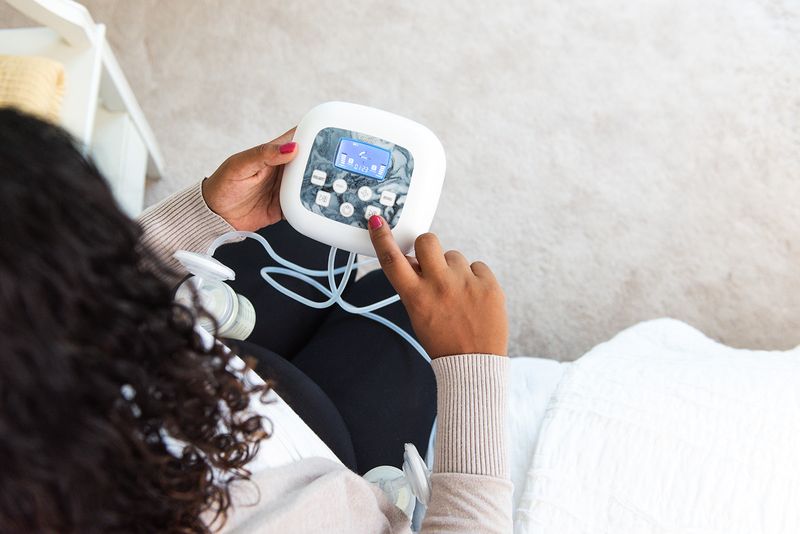What You Need to Know About Breastfeeding Your Newborn Baby

If you’re thinking about your breastfeeding journey, chances are you’ve come across countless tips on how to master your breastfeeding journey, or what do I need for breastfeeding types of articles. The truth is, there are many wonderful suggestions out there for successful tips for breastfeeding your newborn, but it’s also important to remember that every person’s body and path with nursing will be different!
If you’re wondering about things like how often to breastfeed and tracking your baby’s growth, you’ve come to the right place! We are here to clear up some of the confusion about how often someone ought to breastfeed from the get-go, and provide some tips for ensuring your baby is thriving and gaining enough weight.
How Often Should You Nurse Your Baby?
The truth is, newborns eat a very small amount, and very frequently! During the first month of life, a baby will likely breastfeed 8-12 times a day. Between their first and second month of life, your child will likely be down to needing about 7-9 feedings per day. All of that said, it’s best to nurse on demand for the first month or so. Your baby will give you cues when they’re hungry, and it’s best to follow their lead and nurse when they’re hungry. Try not to go more than 2-3 hours between feedings during the first month.
Once your baby gets past their first month of life, they will require a little less feeding. It is even possible that you can get into a predictable schedule with them that will allow you to reclaim some of your life (and sleep) back! That said, a newborn should never go more than 4-5 hours without feeding, even in the middle of the night.
How to Know if Your Baby is Gaining Enough Weight.
If you’re concerned about your baby gaining enough weight, you are not alone. Many new parents worry that their newborn may not be gaining enough weight or getting enough from breastfeeding. The good news is that it’s easy to track your newborn’s weight and diapers to ensure they’re getting enough to eat!
Doing weighted feeds is a great way to track baby’s intake to see both how much breastmilk you are producing, how much is transferring to baby, and if they are growing on track with their age. We have hospital-grade scales available for use at all our boutiques throughout the Puget sound (located in West Seattle, Tukwila, and Poulsbo) available for parents to use. You can also rent a scale for a small fee. You’re welcome to keep it as long as you need, and we’re here to help guide you through how to perform weighted feeds!
The goal of a weighted feed is to see how much breastmilk transfers from the breast (or bottle) to the baby during a feed. This is the only way to compare how much they weigh before and after feeding. It is an excellent way to determine if they are getting enough from the process or if you might need to supplement or address any feeding issues.
How do I know if my baby is getting enough milk?
Monitor your baby’s wet and poopy diapers. A baby will typically have one pee and one poo on day one, two on day two, three on day three, four on day four, etc. By day six, your baby should have 6-8 wet diapers and 1-3 or more bowel movements per day.
Closing Thoughts on Breastfeeding Journeys
It’s helpful to remember that no two breastfeeding or breastpumping journeys are alike, even from child to child! If you suspect that something is off with your baby’s growth, your breastfeeding or breastpumping setup, or something else, reach out to an IBCLC for support. We have IBCLCs available both in-person and virtually to support you with any of your questions or concerns. If you need support, reach out, we are here to nurture you and your baby through pregnancy, postpartum, and beyond.


